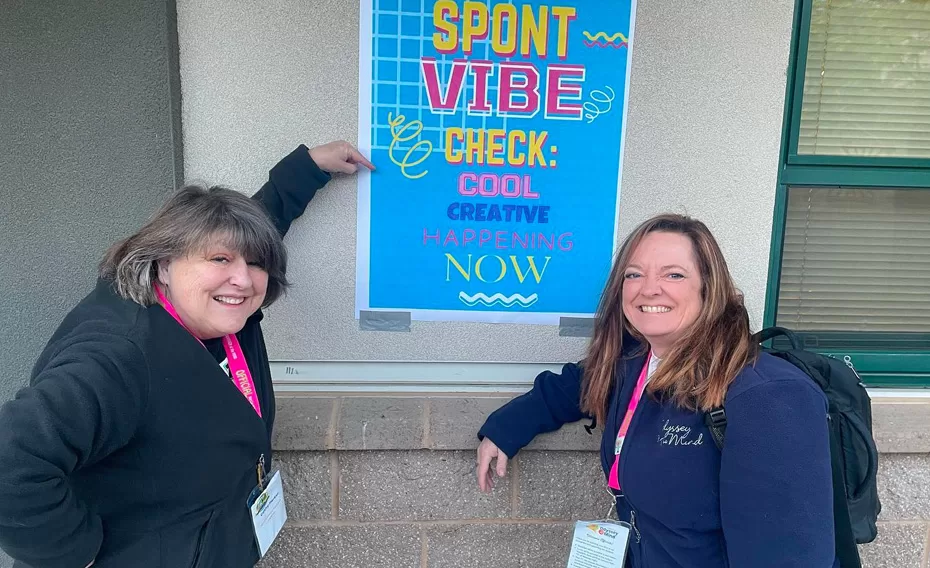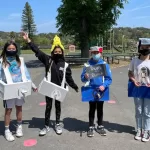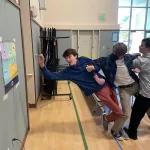Virtual Verbals? Time for a New Mindset!
If you are new to Odyssey, new is the name of the game.
If you’ve participated in Odyssey before, you and your team are used to the format typically used to solve verbal problems during spontaneous competitions:
- maximum of 5 members participating
- “round robin” order for giving responses
- 5-7 response cards per INDIVIDUAL team member
- Cannot pass your turn
- “If one member of the team is stuck, the team is stuck.”
Although working as a team, in reality during an “in person” spontaneous competition verbal problems are individually solved by each team member with their 5-7 individual responses. The individual parts are then combined to create the team’s total score. Collaboration on responses is not usually allowed.
NOT this season!!!
Verbals in a Virtual Competition
Welcome to a new type of verbal competition! The Virtual Spontaneous Competition is 20 minutes long. This includes thinking time, generating responses, and submitting final responses.
A few of the changes:
- All team members can participate.
- There’s no specific order for giving responses.
- 25-35 total responses are submitted by the TEAM.
- Responses can be created together by more than one team member.
- The number of responses given by any team member is not limited.
- If team members feel uncomfortable giving responses (some do), they can still participate by giving feedback on other responses.
- If more than the required number of responses are given, the team can decide which responses to choose to submit for scoring.
Teamwork is critical while completing a virtual verbal spont problem. The whole team works together to create and submit the very best set of responses possible. So in a virtual competition, the verbal problem is solved by the team as a whole.
Practicing Virtual Verbals
Your biggest task is to provide many opportunities for the team to learn how to brainstorm and work together to create and finalize 25-35 responses in a timed (20 minutes!) situation. You need to help the team with its tasks during each practice session.
Teams will need to:
- List out or share responses in an orderly fashion that can be heard or seen by other team members.
- Getting started, it’s been suggested that teams use a round robin format for verbally sharing responses (with passing definitely an option) over a video conference platform
- A great way to share potential responses is via a common document that all team members can see and access. The document can even be editable by all members so that time is used efficiently. When writing or typing responses, don’t worry too much about spelling or perfect capitalization; as long as others figure it out, you’re good to go!
- Figure out how to best manage the 20 minute spontaneous competition session. Some teams report dividing that session into parts such as brainstorming, sharing, analyzing, and finalizing. Multiple timing devices for the various parts could also be used.
Coach as the team scribe during practice:
- If responses are being given verbally, the coach can practice typing up all the potential responses. In a virtual competition, the scribe will be working under a time limit, too!
- If a common document is being used, the coach can practice transferring the team-chosen “winners” to a final document, just like the one the team will be submitting during the virtual spontaneous competition.
- Remember: Other than being the scribe, the coach CANNOT contribute in any way while the team is completing its 20 minute session.
- Big Suggestion: Mute yourself while being a scribe! Your reactions can inadvertently steer the team toward choosing certain responses.
After a practice session is finished, you can put your amazing coachy skills to good use by helping the team identify and celebrate its strengths, as well as improving its needs. Debrief, then debrief some more!
Foster Inclusivity: Please keep an eye on all team members; sometimes the loudest voices drown out the most creative thoughts and responses. As with all other aspects of Odyssey, it’s critical that all team members feel included and welcome during the spontaneous process. By practicing virtual spontaneous regularly, your team will gain confidence and increased comfort in a timed competition situation.
Virtual Spontaneous Resources
Verbal Problems
For practice, you can use any verbal spontaneous problem that involves responding to a prompt. There are MANY resources on the NorCal Association website under the Coach tab for “Coaches – Spontaneous.”
Videos
New! Spontaneous Coaches Training Video:
This is the first video that national has put out about Spontaneous – long overdue! Lots of good info and tips in this video.
Please note: Some spontaneous practice methods are shown in this video that could work very well for your team. Please keep in mind that the methods shown are suggestions for practice and are not mandatory. As with all of Odyssey, there is no one right way to complete a spontaneous problem or to practice. Do what works best with your team and its dynamics!
- Available at the National Odyssey website, Member Area: Log in using your membership number and the zip code connected with your membership. It is listed on the first page.
- NorCal Association Website: Under the Coach tab, in the Virtual Journey Tools section.
Already a Classic! Virtual Spontaneous Practicing Video:
Created by crafty Californian Odyssey peeps, this video covers many ways to practice spontaneous virtually. Gosh, these are just good ways to practice spontaneous, period!
- Available at NorCal Association Website: Under the Coach tab, in the Virtual Journey Tools section.
Click HERE for Virtual Journey Tools
As we get closer to the NorCal Showcase, we’ll put out some suggestions for the Role of the Coach during Virtual Spontaneous Competition. Tune in for more info at the January 21 Q & A webinar!
Coaches –
Go forth and do good Spont!





